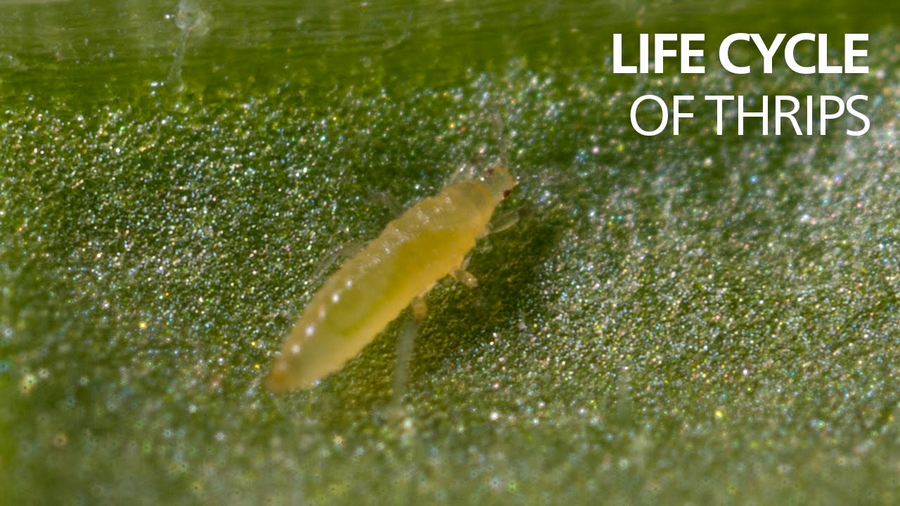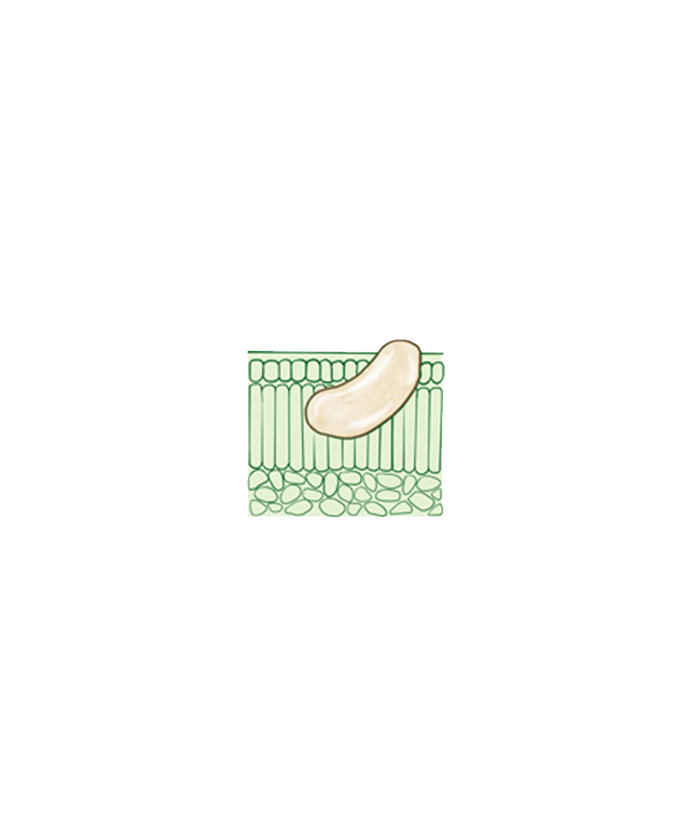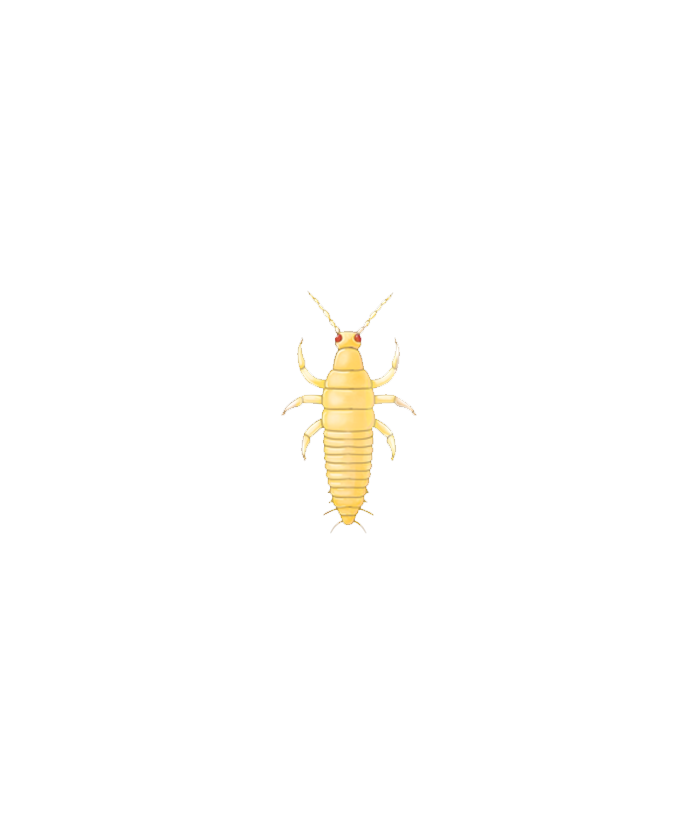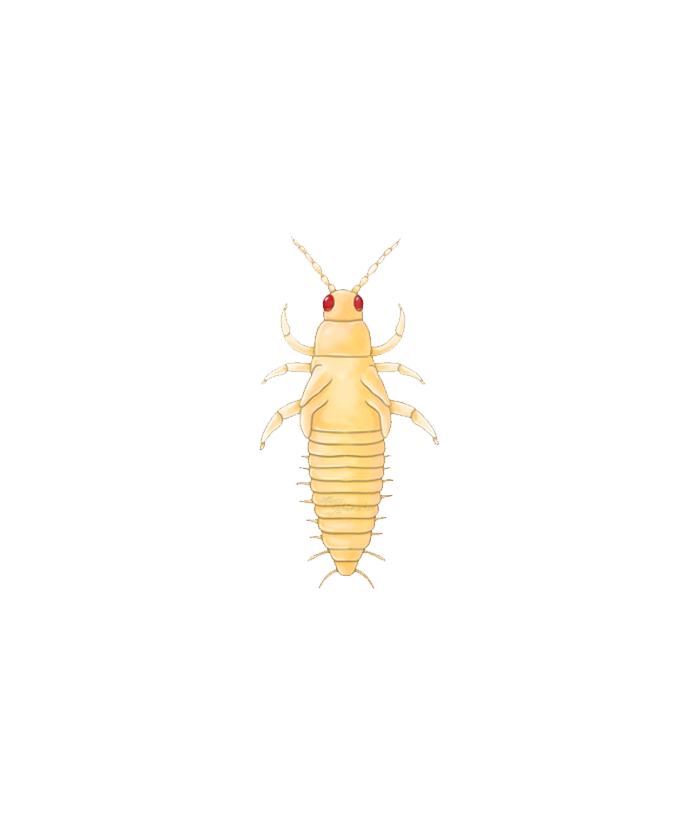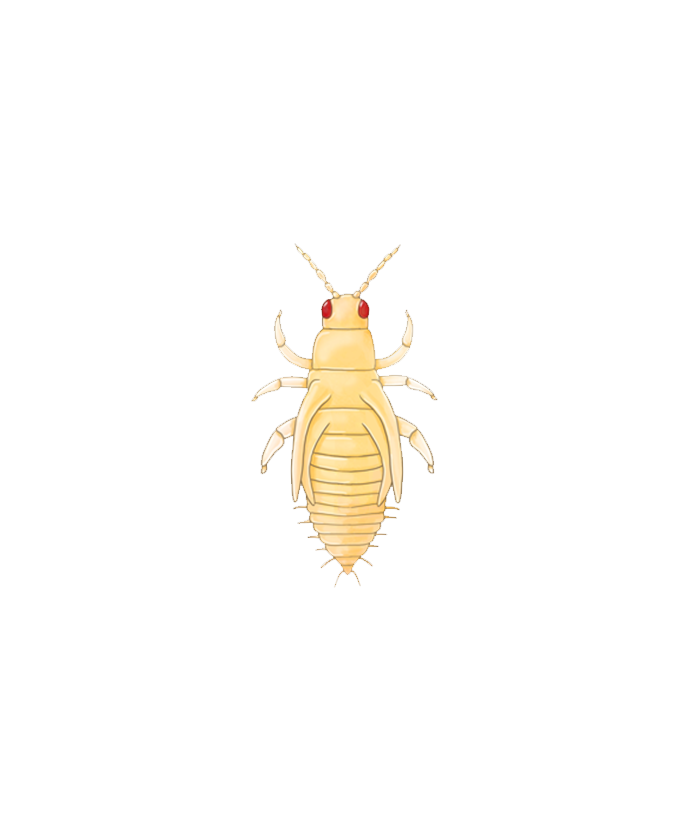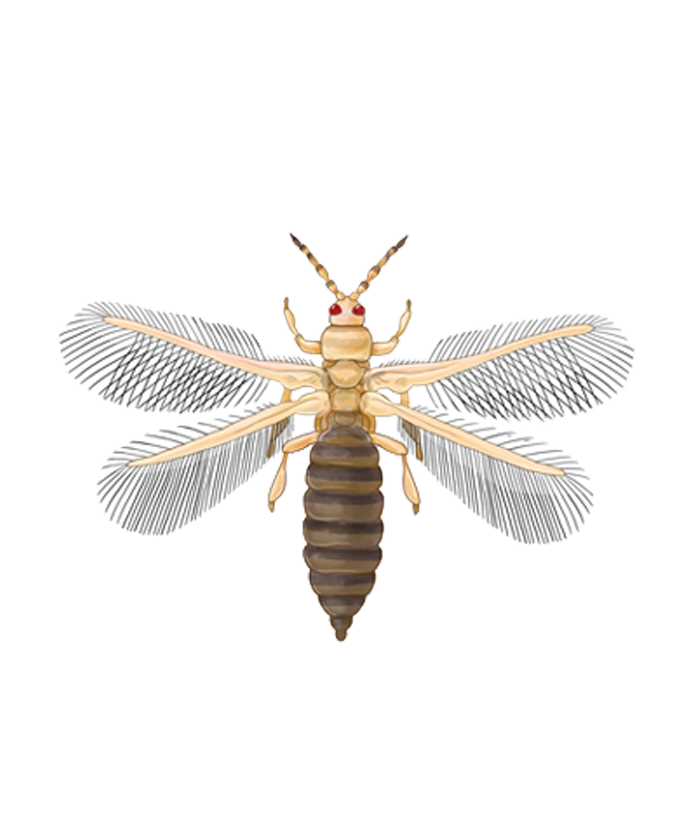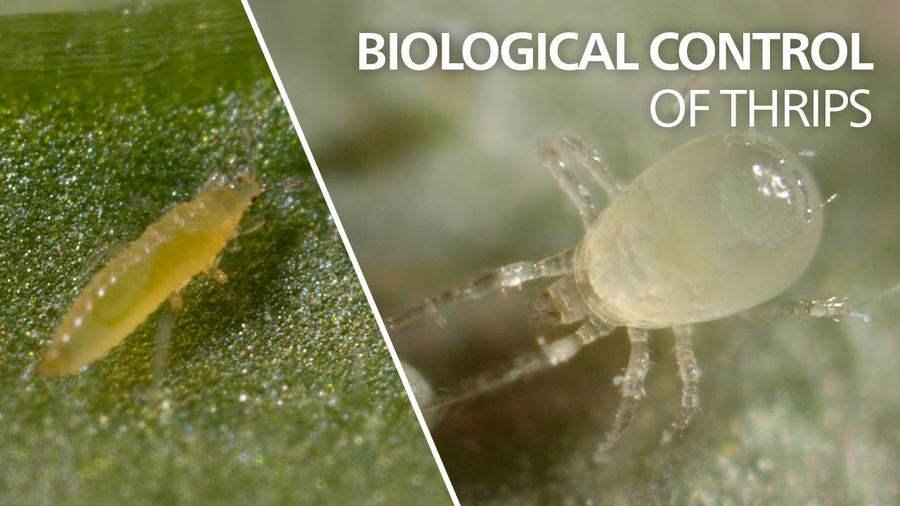What are thrips?
Several species of thrips are a major problem in greenhouse horticulture. The Western flower thrips (Frankliniella occidentalis) is the most damaging species. Thrips form the order Thysanoptera, a name that literally means ‘fringed wings’, and refers to the eyelash-like fringe of hairs along both edges of the thin wings. There are more than 6,000 known species. Most are harmless, some are predators, and fewer than 20 species can cause problems in agriculture and horticulture. Thrips are small insects (0.5-14 mm), with the largest species found in the tropics. In temperate regions they are not larger than 2.5 mm. All thrips species that cause damage in green-houses belong to the family Thripidae.
Life cycle of thrips
Thrips develop through six stages: the egg, two larval instars, a pre-pupa and a pupal instar, and finally the adult insect. The eggs are kidney-shaped and have a white or yellow shell. Before a female deposits an egg, she makes an opening in the plant tissue. The eggs are laid in leaves, flower petals and in the soft parts of stalks. On the leaves of sweet pepper, for instance, these egg-laying sites are recognizable as wart-like growths, whereas on most other crops the egg deposition sites cannot be seen. Larvae and adults feed on all aerial parts of the plant and are fairly mobile. Immediately after hatching, the larvae begin to feed on plant tissue on the underside of the leaf. The larvae are smaller than the adults and lack wings. Depending on the species, thrips either pupate on the plant or in the ground. The pre-pupal and pupal instars are recognizable by their developing wing buds. Compared with the pre-pupa, the pupa has longer, more developed wing buds and longer antennae that are curved back over the head. The pre-pupal and pupal instars do not feed and only move if disturbed. In adults, both pairs of wings are fully developed. Only at this stage can the particular species of thrips be identified based on form, colour and pattern of hairs.
Recognize thrips
Thrips adults can be identified by the following characteristics:
- Size and shape: Thrips are tiny, slender insects that are typically less than 2 mm in length. They have a distinctive elongated shape, with long, narrow wings that are fringed with fine hairs.
- Color: Thrips can be a variety of colors, depending on the species. Most of them are brown or black. Some species may have distinctive markings or stripes on their bodies or wings.
- Movement: Thrips are strong fliers and can move quickly between plants. They are often found on the undersides of leaves, where they feed on plant sap.
- Damage: Thrips can cause damage to leaves, flowers, and fruits by feeding on plant tissue. This can result in distorted growth, discoloration, or scarring. They may also transmit plant viruses.
Recognize thrips larvae
Thrips larvae are usually pale or transparent in color and have a similar shape to the adults but are smaller and lack wings. One of the most distinctive features of thrips larvae is their characteristic "frass," which is a type of waste material that they produce as they feed. The frass looks like small black or white specks on the surface of leaves or flowers and can sometimes be mistaken for fungal spores or other types of debris.
Thrips damage
Thrips cause damage to the plant by piercing the cells of the surface tissue and sucking out their contents, causing the surrounding tissue to die. The resulting silver-grey patches on leaves and the black dots of their excreta indicate their presence in the crop. At a later stage, the empty cells become desiccated and the adjacent cells turn brown. The vigour of the plant is also reduced by loss of chlorophyll. With a serious infestation the leaves themselves can shrivel, and there can be varying levels of fruit damage depending on the species of thrips and their population density. In ornamentals, flowers can be seriously damaged, while leaves are often damaged and become misshapen. Thrips are also responsible for the transmission of viruses, the best known of which is tomato spotted wilt virus (TSWV), mainly transmitted by F. occidentalis.
Thrips damage
How to prevent thrips
Preventing a thrips infestation in your greenhouse crop involves several strategies. Firstly, it's important to maintain good plant health through regular irrigation and fertilization, as stressed plants are more susceptible to thrips infestations. Additionally, it's important to make sure thrips cannot enter your greenhouse by using hygienic measures, such as regularly cleaning and disinfecting greenhouse surfaces and equipment.
It's also important to monitor your crop regularly for signs of thrips, so you can detect an infestation early and take action. This can be done by using sticky traps, which are attractive to thrips and can help trap them before they can cause damage. You can also scout the plants visually to look for signs of thrips, such as distorted leaves or silvery streaks.
Finally, introducing biological control agents such as predatory mites can be an effective preventative measure, as these natural enemies can help keep thrips populations in check. Predatory mites in sachets can be a good preventive measure as the sachets enable a continuous supply of predatory mites even before the pest is present.
Thrips control videos
Take a look at the video or go to our Youtube channel to see our thrips control products in action.
